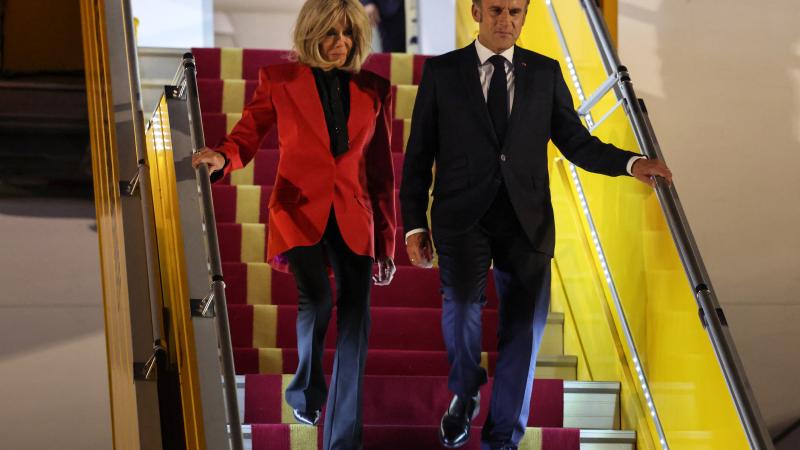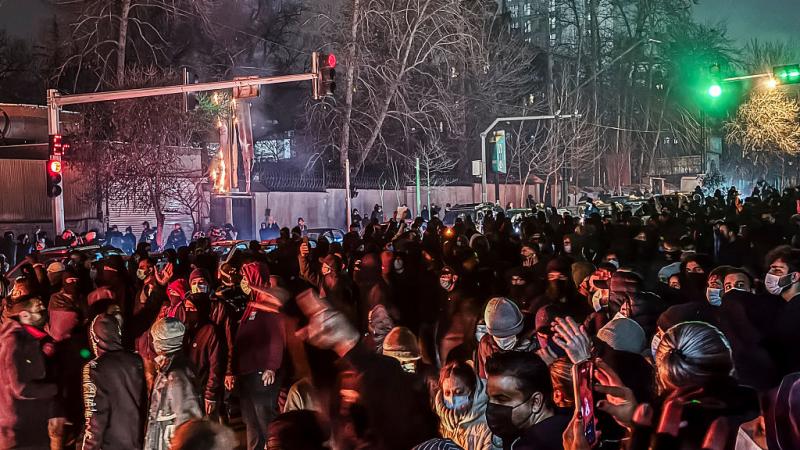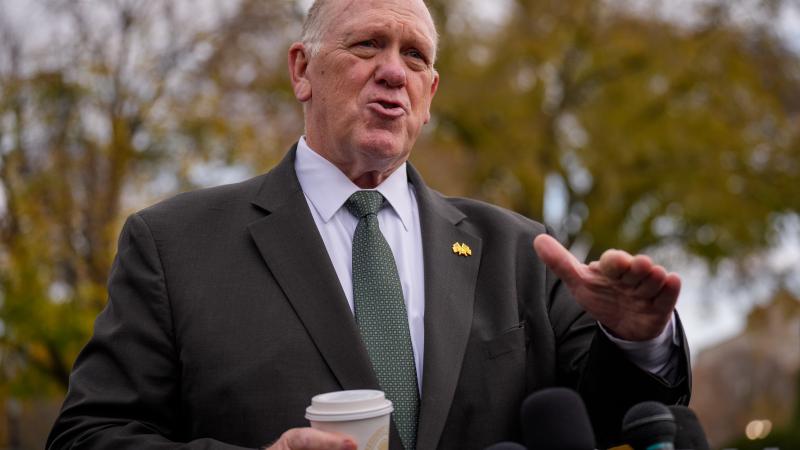Convoy politics hit Europe over farm policy, like those in North America over COVID and border
Arguably the most effective, recent convoy protests were in Canada in 2022 over the county's COVID policies. The gridlock at least made clear residents didn't support strict, virus mandates.
The politics of convoys have gone international.
The most recent of the convoy protests are taking place across Europe to show opposition to European Union agriculture policy, which follow COVID mandate ones in Canada and the U.S., and more recently a border security one in Texas.
The latest was one this past weekend in Italy, part of a series of worldwide tractor protests to call attention to the agriculture policy. But it was hardly an exercise in efficiency and organization.
Farmers using their tractors to call attention to their causes has a long history, dating to the late 1970s in the U.S. But that kind of protest gained traction in recent years, with large protests in the Netherlands, France, Spain, Germany, Poland, the U.K., and Romania since 2019.
In Canada, a 2022 demonstration over coronavirus restrictions – dubbed the “freedom convoy” – took a page from the tractor playbook when hundreds of 18-wheelers blocked key roads in the countries capital and bridges connecting Canada and the U.S., disrupting trade between the countries that are each other’s largest trading partners.
Similar ones took place in the U.S., including one in the Washington, D.C., area in April 2022, but appeared less effective and organized than those in Canada.
Earlier this month, a convoy arrived at the Texas border town of Quemado to protest Biden administration border policies and record migration numbers at the southern U.S. border, particularly along the southwest sector.
While the “Take Our Border Back” convoy rally clearly showed Americans' frustration with the matter, it too was slightly underwhelming. Though touted to attract 700,000 trucks, it ended up attracting only about 200. In addition, officials in Texas warned well-meaning protesters about the risk of them getting in the way.
At the heart of all the protests are grievances against government policy. In the case of the European protests, agricultural policy whether that means strict standards for environmental protection that increase the cost of production for farmers or a lack of protection against low price imports that made it harder for them to make a profit on their goods.
Tax issues and subsidies are also on the radar screen of the angry tractor drivers.
The topic is a hot one even in the U.S., where government agriculture subsidies can be mis-targeted, earning the ire of farmers.
But forging reforms to agricultural policy by blocking thoroughfares with farm equipment as has been taking place in Europe has its challenges.
In Italy, for example, Friday’s protest was repeatedly delayed, then scaled back before it finally took place. Different farmer’s groups clashed over which group should lead the initiative.
In the end, only four tractors were allowed to make the trip from the outskirts of Rome to the historical center of the city where they parked near Circus Maximus, a vast field that once held a Roman-era stadium which, at its peak, could hold as many as 300,000 spectators. On Friday, there were about 30 farmers and supporters -- and about as many law enforcement officials.
The route they took was picturesque, passing Rome’s iconic Colosseum as well as the headquarters of the United Nations’ Food and Agriculture Organization – the UN’s chief agriculture policy entity – on the way. The tractors involved in the protest featured large Italian flags and signs bearing slogans, including “Without farmers: no food, no future” and “End payment for not growing crops.” Cars passing the small procession honked their horns in support.
The protestors threatened to “unleash” a convoy of tractors on the capital city if they were not granted an audience with Prime Minister Giorgia Meloni. The warning worked: the Italian head of government hastily arranged a meeting with leaders from a half dozen Italian agricultural sector organizations, and afterwards she promised to continue “discussing the well-being of a strategic sector for our economy, something we have put at the center of our actions.” But there was no detailed agreement, and another protest is scheduled for next week.
Last week, the protesters celebrated when the European Commission's proposed rules to dramatically limit pesticide use by 2030 were unexpectedly scrapped. The commission also agreed to change the way it calculates greenhouse gas emissions cuts to require less action from farmers. The measures were written last year under pressure from environmentalists, but farmers said the policies would raise their production costs and make them less competitive.
The sometimes at-odds goals of environmentalists and farmers -- as well as divisions that often fracture each movement -- are among the many policymakers must take into consideration and they are among the reasons the messy protests in Rome and elsewhere in Europe are unlikely to conclude any time soon.
The Facts Inside Our Reporter's Notebook
Links
- late 1970s in the U.S.
- the Netherlands
- Spain
- Romania
- âfreedom convoyâ
- disrupting trade
- strict standards for environmental protection
- low price imports
- earning the ire of farmers
- farmerâs groups clashed
- only four tractors
- Circus Maximus
- United Nationsâ Food and Agriculture Organization
- a meeting with leaders from a half dozen Italian agricultural sector organizations
- limit pesticide use by 2030 were unexpectedly scrapped
- pressure from environmentalists
- at-odds goals of environmentalists and farmers
















